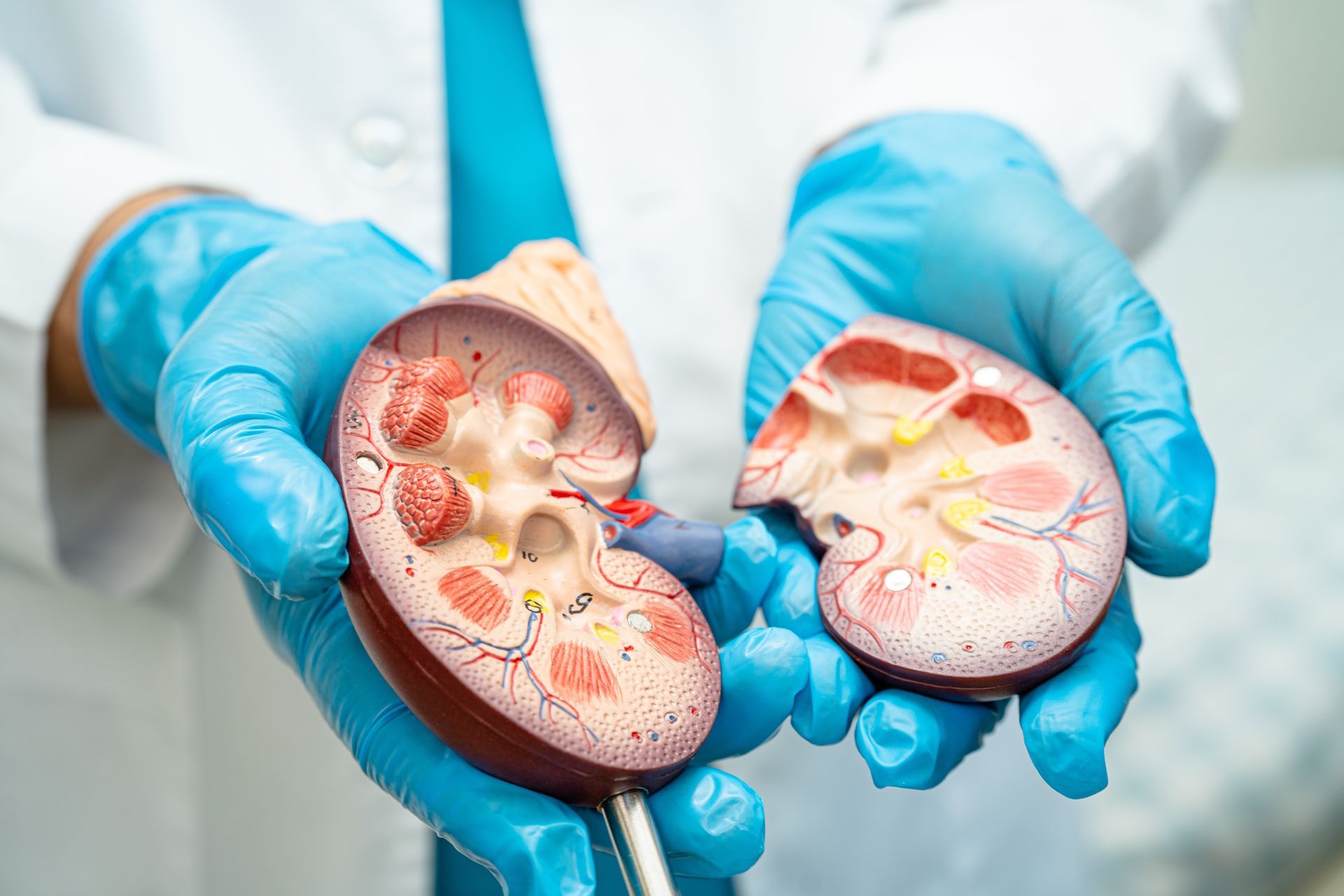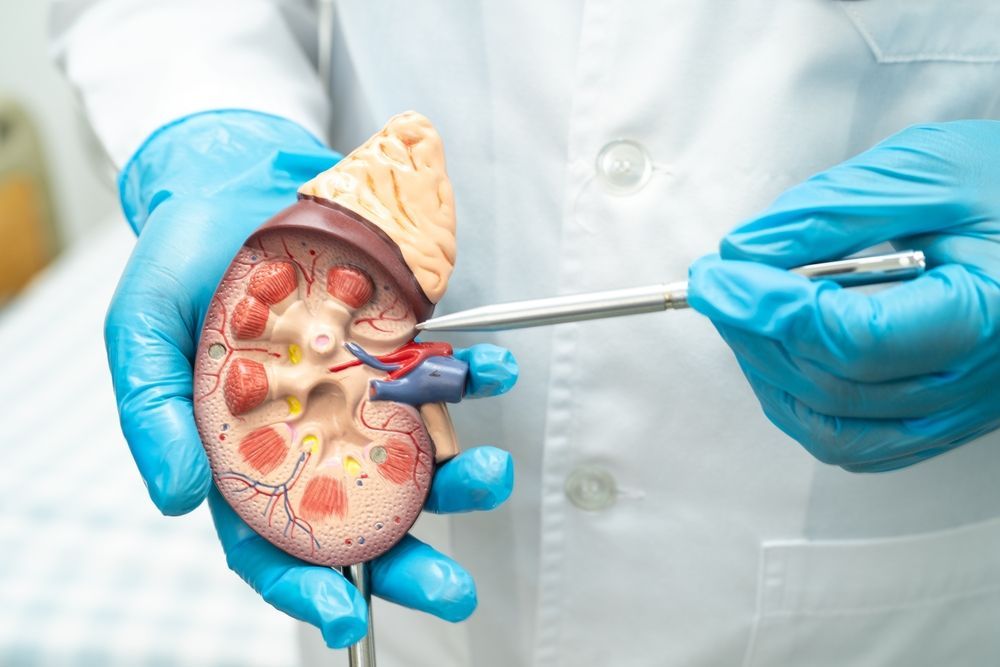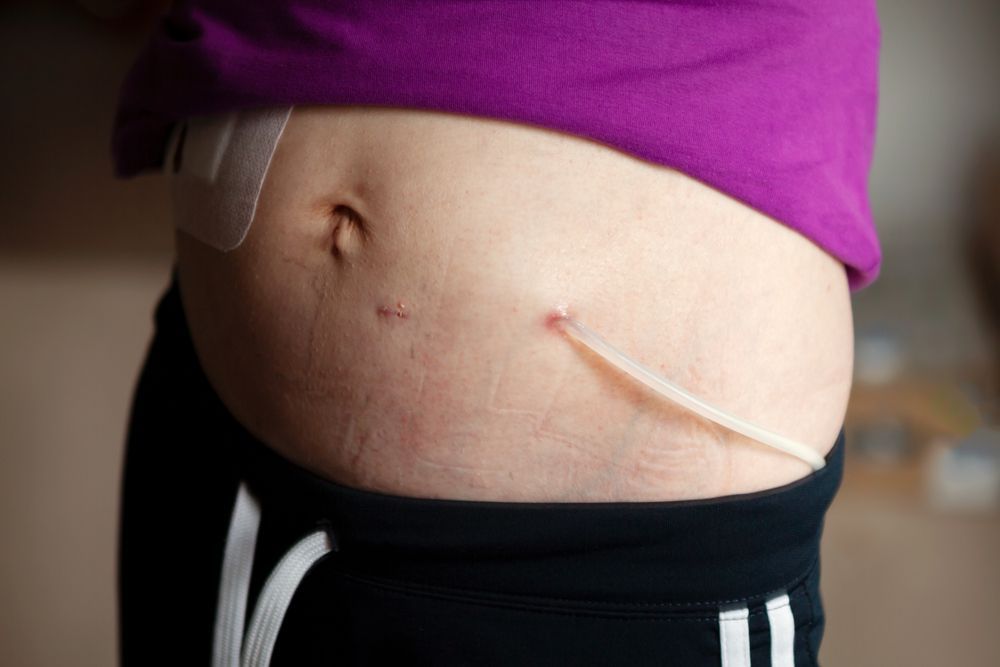Does Dialysis Hurt? Understanding the Experience
Share this Article:
Chronic kidney disease (CKD) can be a painful experience. The kidneys lose the ability to keep you alive by cleaning, filtering, and balancing the fluid and electrolyte levels in your bloodstream. Late-stage chronic kidney disease manifests with painful symptoms such as muscle cramps, spasms, back pain, swelling, nausea, and fatigue that can take over. At this point, your nephrologist will start preparing you to receive dialysis to clean your blood. It’s natural to have questions like: Is dialysis painful? What does dialysis feel like? How will dialysis affect my lifestyle? Will I ever feel better?

Like any urgent medical treatment, there can be some initial discomfort getting started, but overall, dialysis is a comfortable treatment that saves the lives of people with kidney failure. Dialysis can help people live many years with a good quality of life. Let’s discover more about what the experience is like so that if you or a loved one needs to go on dialysis, you can be more prepared and confident about this lifesaving process.
Understanding the Basics of Dialysis
Two main types of dialysis that can filter and clean the blood for patients whose kidneys no longer work:
Hemodialysis
If you and your nephrologist decide that hemodialysis is the right method for you, a minor surgical procedure will establish “vascular access” that can be used regularly to connect your bloodstream to a dialysis machine (dialyzer). The surgical process can be painful at first. This vascular access is typically through a vein and artery in the arm. Your blood gradually filters through the dialyzer for cleaning and balancing. The dialyzer then returns your filtered blood into your body. Once vascular access is established, Vitality Dialysis can train and set you up to perform dialysis at home as often as your kidney doctor directs. Dialysis sessions can last from three to four hours and may be needed several days a week. It can also be done more slowly overnight as you sleep.

Peritoneal Dialysis
Peritoneal dialysis cleans and filters your blood by using the tiny blood vessels inside your abdominal lining (the peritoneum). A dialysis solution flows into your abdominal cavity via a tube, where it cleans the blood, balances fluid levels, and adds electrolytes. After a certain amount of time, the spent fluid flows back out of the abdomen and into a bag. This spent fluid can be flushed down the toilet. This “exchange” can be done while you walk around and accomplish things, and needs to be done a few times daily on a regular schedule. It can also be done overnight. Establishing the port through which the tube flows into your abdomen requires another short surgical procedure that can also cause some pain, but once this connection is established, it’s a comfortable process aside from a bloated feeling from the fluid in the abdominal cavity.
Underneath these two main types of dialysis, there are also subtypes related to how each process is administered. These different modes of application give patients and families more options and choices so that they have more control over their lives on dialysis.
Does Dialysis Hurt? Breaking Down the Experience
Aside from establishing the connection points in the body where dialysis is administered, dialysis is a comfortable process from day to day. Some temporary discomforts can occur, however, and it’s good to be aware of what causes them and how to get relief.
Physical Sensations During Dialysis
The following are some of the various physical sensations you might experience during a dialysis session, depending on what type of dialysis you are receiving:
Dialysis Pulse
As your bloodstream takes a detour through the dialyzer during hemodialysis, you may feel a little vibration or pulse on the skin over your vascular access. We often call this the dialysis “pulse” or “thrill,” and you can feel that your blood is flowing out and back into your body.
Cool Temperatures
Your body temperature may feel a little cool as it comes back into your body after its trip through the dialyzer because it’s been outside the warmth of your body. Many hemodialysis patients like to wear warm clothing and wrap themselves in blankets and fluffy socks during home dialysis. This is a good idea, as long as you leave the vascular access site uncovered.
Bloating on Peritoneal Dialysis
It’s common to feel some minor bloating as the dialysate solution enters your peritoneum. You can ask your healthcare team to adjust treatment to make this more comfortable as well. Planning your meals and eating a healthy diet that reduces bloating in the abdomen can help relieve some of that pressure. Keeping salt intake low and timing fluid intake can also limit the bloated feeling. Sometimes a laxative can help. Otherwise, PD should feel quite comfortable. If the bloating does not resolve, talk with your healthcare team.
Managing Discomfort
Most of the discomforts listed below are signs that your dialysis treatment should be adjusted. This may mean adjusting how often, when, and for how long dialysis is administered. Once it’s adjusted to your body’s unique needs with the help of your nephrologist and your Vitality Dialysis home dialysis team, you will quickly get accustomed to and comfortable with the process.
Hemodialysis Needle Sticks
Every time you need to receive hemodialysis, you, a nurse, or a dialysis technician will need to insert a needle that connects your vascular access site with the dialyzer machine. It can take some patients a while to get used to regular needle sticks, but the discomfort is usually short-lived and fades shortly after the needle goes in. Patients who opt for home dialysis and learn how to administer dialysis on themselves often report a more comfortable experience with needles because they are in control of the process.
Low Blood Pressure
During the three to four-hour-long daytime hemodialysis sessions, your body will have to adjust to having the blood removed and replaced as it is cleaned. This can cause low blood pressure, which can give you a feeling of dizziness or nausea. If this happens, let your healthcare provider know. Often, switching to an at-home, overnight dialysis schedule can alleviate these symptoms because the process happens much more slowly and the body has time to rest and adjust.
Muscle Cramping
This is not a typical dialysis discomfort and can signal that your treatment schedule should be adjusted. If you experience muscle cramps during hemodialysis, alert your nephrologist or other members of your care team. The goal is to find the dialysis schedule and process that is most comfortable for you.
Peritoneal Dialysis Catheter Pressure
The catheter that transports the dialysate solution into your abdominal cavity can cause some brief pressure and discomfort as it starts, but this usually resolves quickly.
Since dialysis is typically comfortable when it’s been adjusted and is working well, you should report any pain, swelling, or illness to your healthcare team immediately so they can check for infections or adjust your treatment so that it’s comfortable and gives you the best outcome.
The Emotional Experience of Dialysis
The initial process of getting started with dialysis can be emotional, and some pain and discomfort at the beginning is normal. It’s a lot to adjust to. Home dialysis can make the process much more comfortable and convenient while helping you feel more in control of your situation. Here are some ideas for coping with your new reality on dialysis:
Employ Mindfulness Techniques
If you feel anxious about starting dialysis, use breathing exercises and mindfulness techniques to help you achieve calm and focus on the positive, lifesaving quality of dialysis. Breathing deeply can infuse your system with oxygen. One mindfulness technique some people have found helpful is to focus on “Five Things”: Name five things you can see, five things you can hear, five things you can smell, and five things you can touch. It’s a great way to calm anxiety.
Plan to Relax
If you receive hemodialysis during the day, you will need to relax in one place for a few hours. Plan by making a comfortable area for yourself where you’ll have everything you need: Pillows, blankets, TV and remote, laptop, water bottle, phone, books, games, art supplies, notebook, or whatever will help you pass the time the way you want to. You can even take a nap!
Never Shorten or Skip Treatments
Keeping yourself healthy and lengthening your lifespan on dialysis means following your nephrologist’s instructions precisely. You and your healthcare team will work on finding the dialysis treatment schedule that works best for you and helps you feel your best.
Eat and Drink for Your Health
Follow your doctor’s orders on foods to avoid while you’re on dialysis, and focus on eating a healthy diet and managing your fluid levels as directed by your nephrologist.
Take Prescribed Medications Correctly
Your nephrologist will prescribe medications that help your body maintain healthy blood pressure and balance the correct amounts of minerals, vitamins, and other chemicals in your blood.
Prevent Infections
Store your dialysis supplies in a safe, clean location where everything can remain sterile and safe from pets, children, dust, or debris. Also, follow any procedures for sterilization and keeping your access points clean.
Maintain Healthy Physical Activity
Dialysis can give you a new lease of life! It’s important to stay physically active and engage in activities your doctor recommends. It’s also a good idea to make time for your hobbies and spend quality time with your family and friends.
Seek Emotional and Mental Health Support
It’s important to have people you trust whom you can talk with about your dialysis journey. Help your friends and family understand your needs and concerns. Also, you can find local support groups with other people on dialysis so you can share personal stories and commiserate with each other.
How Home Dialysis Can Improve Your Experience
The Vitality Dialysis team is also a great resource and can help you all along the way. We have a long history of helping patients on dialysis with training, support, equipment, and compassion. We’ve helped thousands of patients get more control, comfort, and convenience in their lives by helping them do dialysis at home.
Vitality Dialysis: Providing Compassionate, Expert Care
Being told you need dialysis to survive can be an anxiety-inducing experience. But it is a lifesaving, generally comfortable medical necessity that modern technology has improved to the point where it is a routine, simple process that you can do in your own home, without traveling far and wide to a dialysis center or hospital. Vitality Dialysis is at the forefront of home dialysis, helping patients learn how to perform dialysis in the comfort of their own homes with compassionate support and expert care.
Share with Us!







